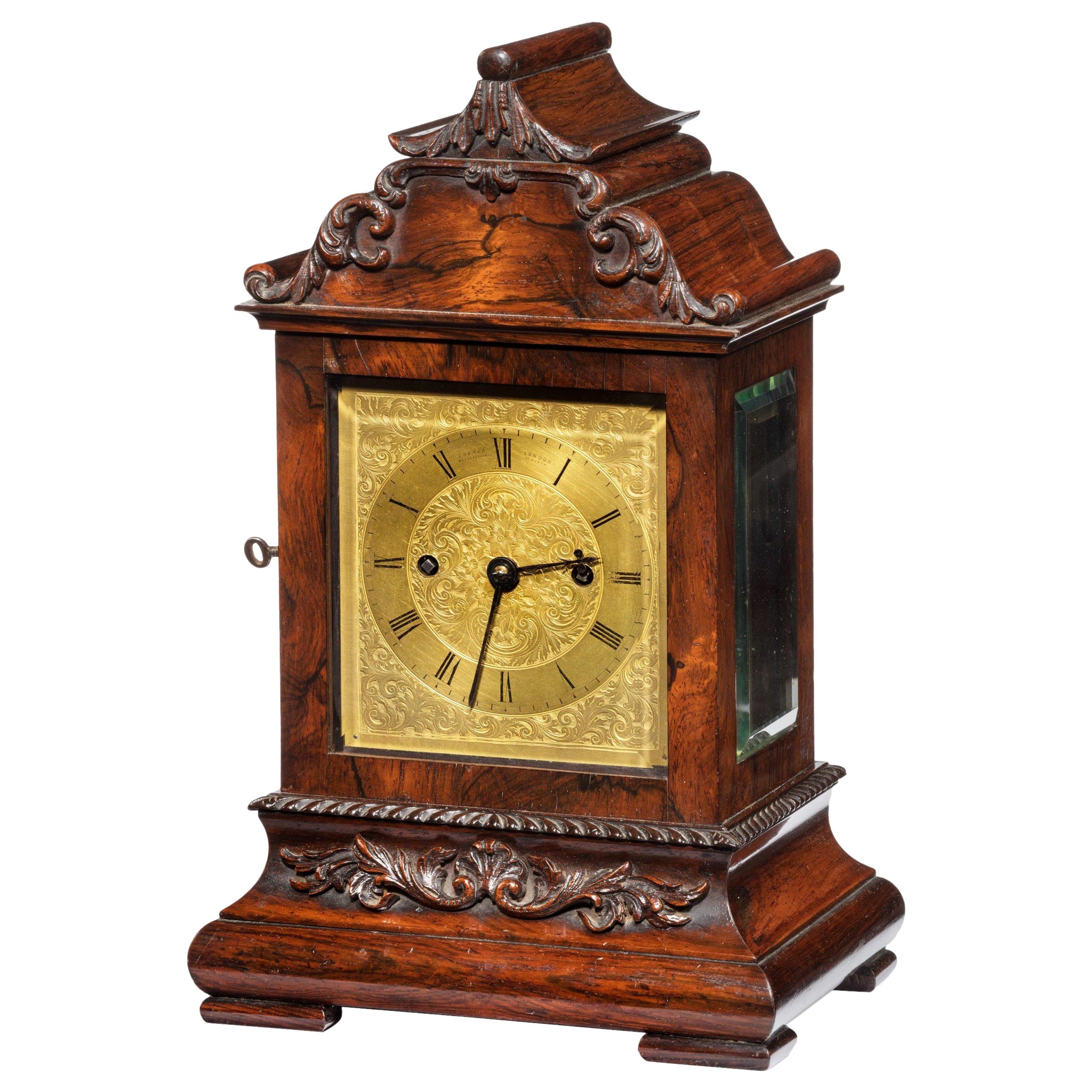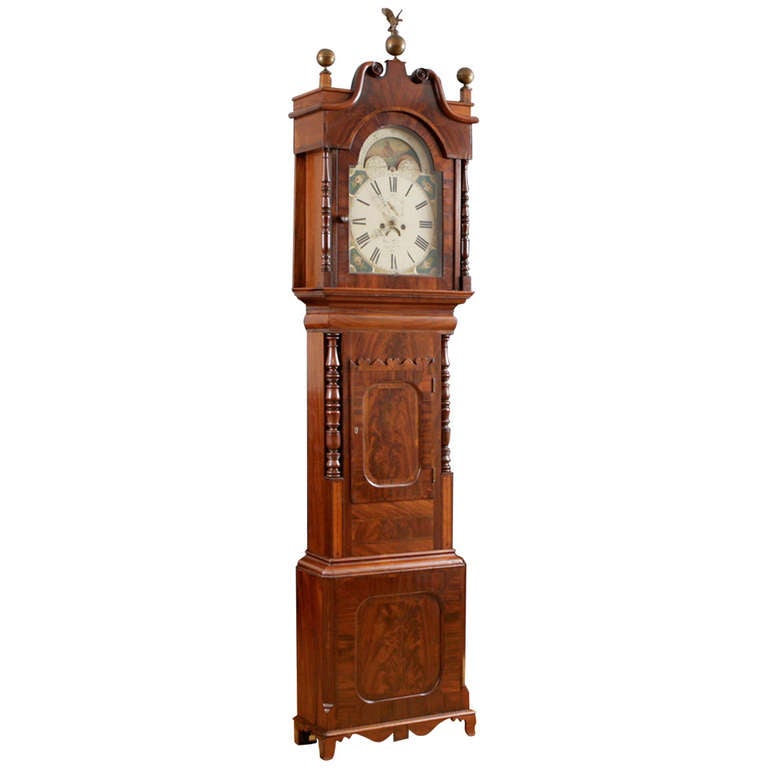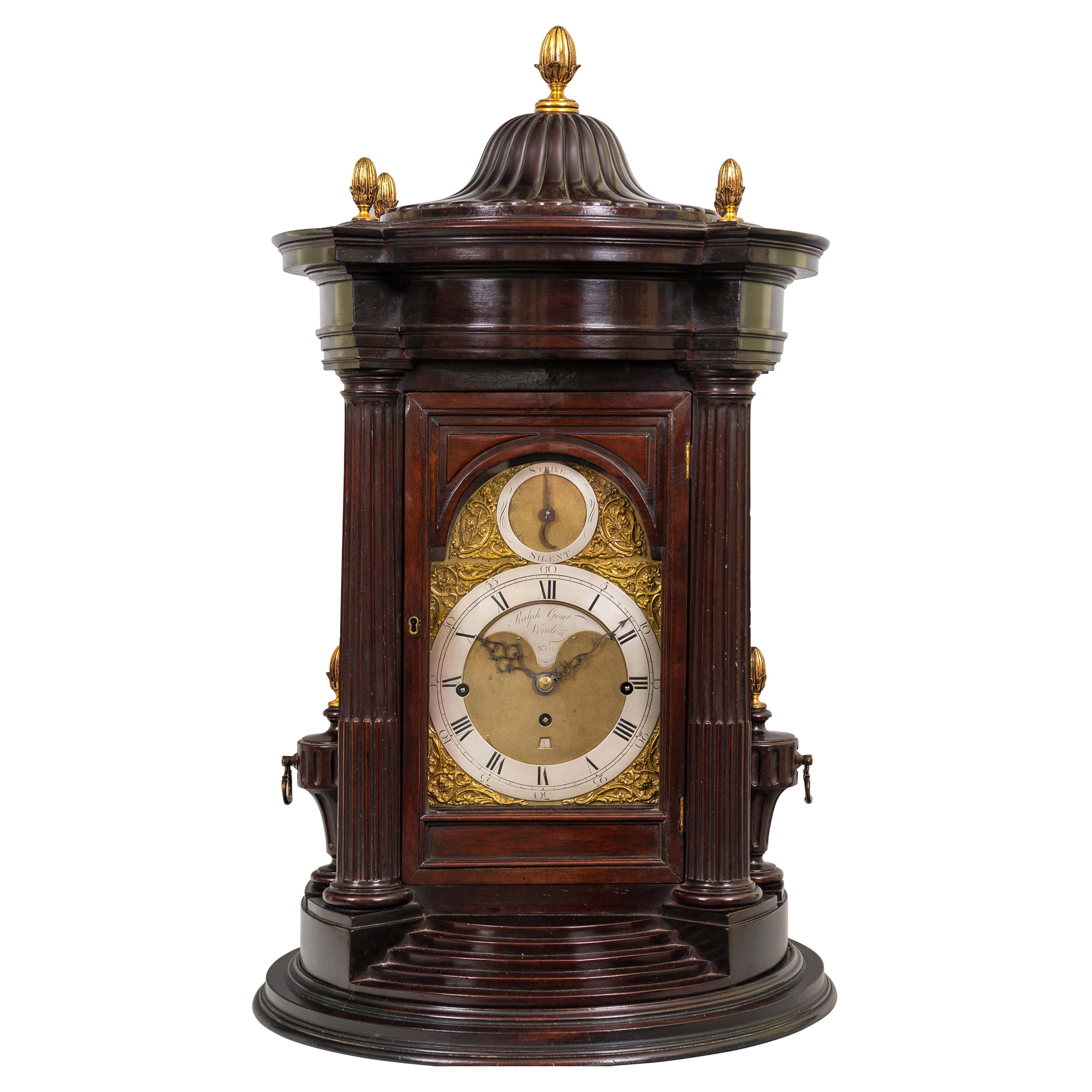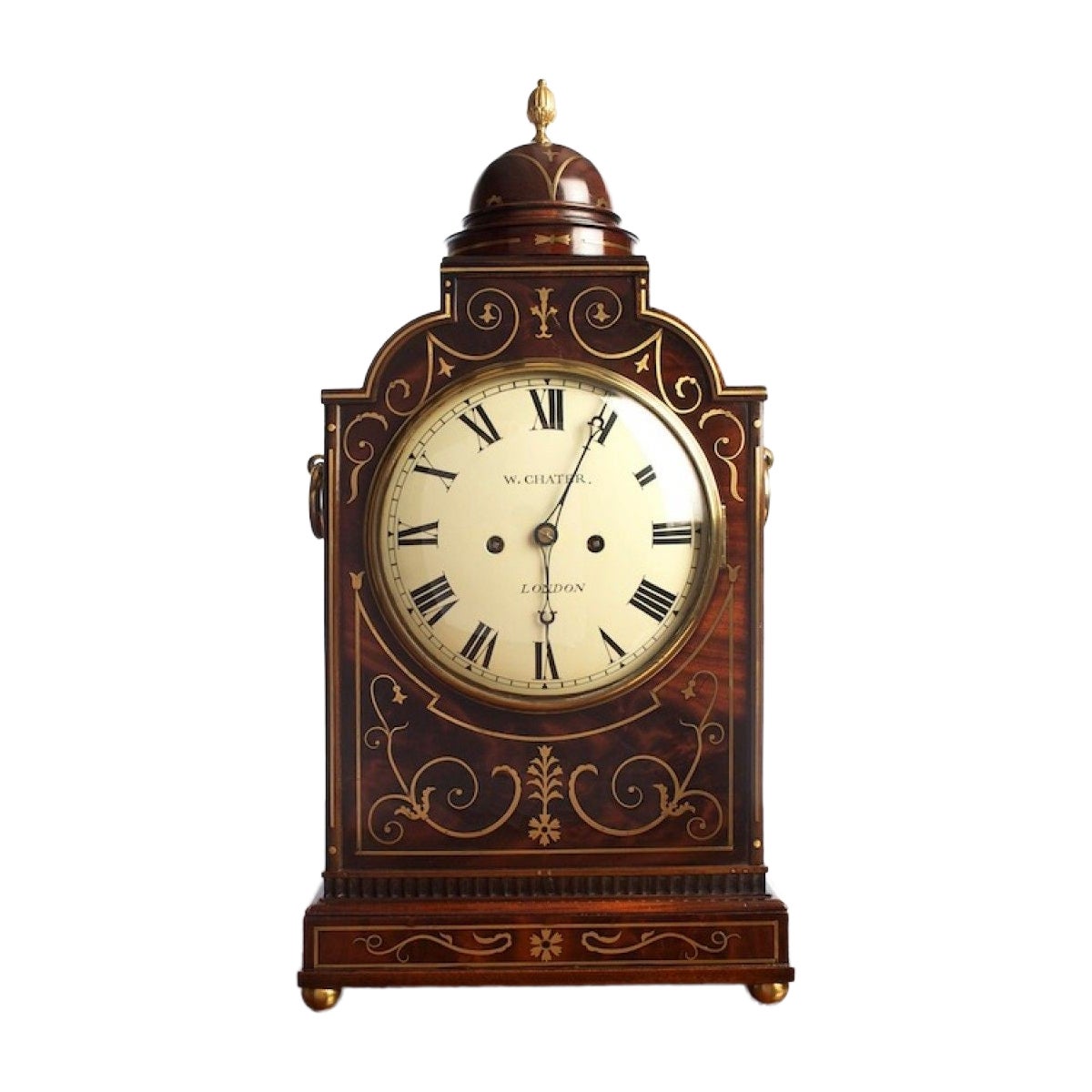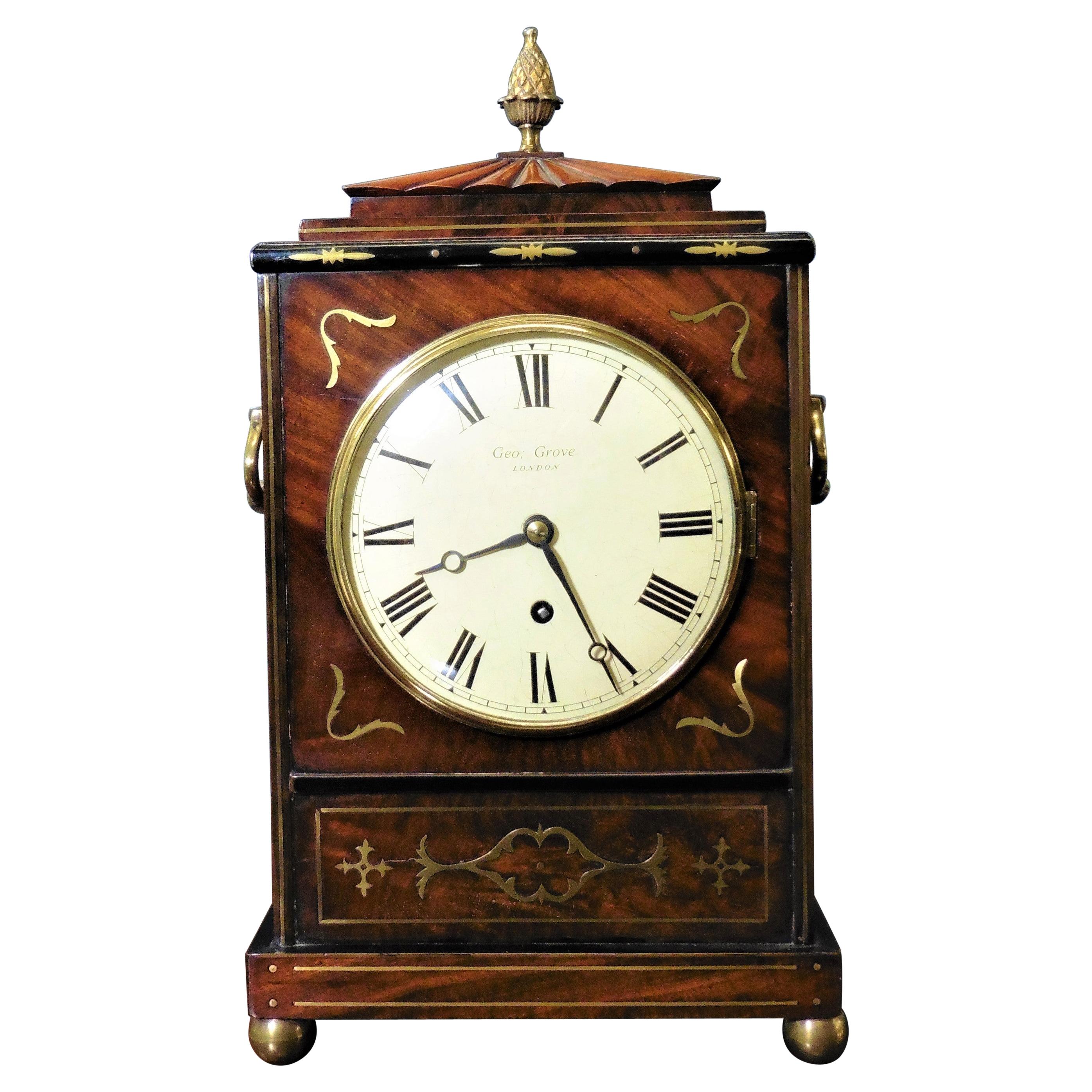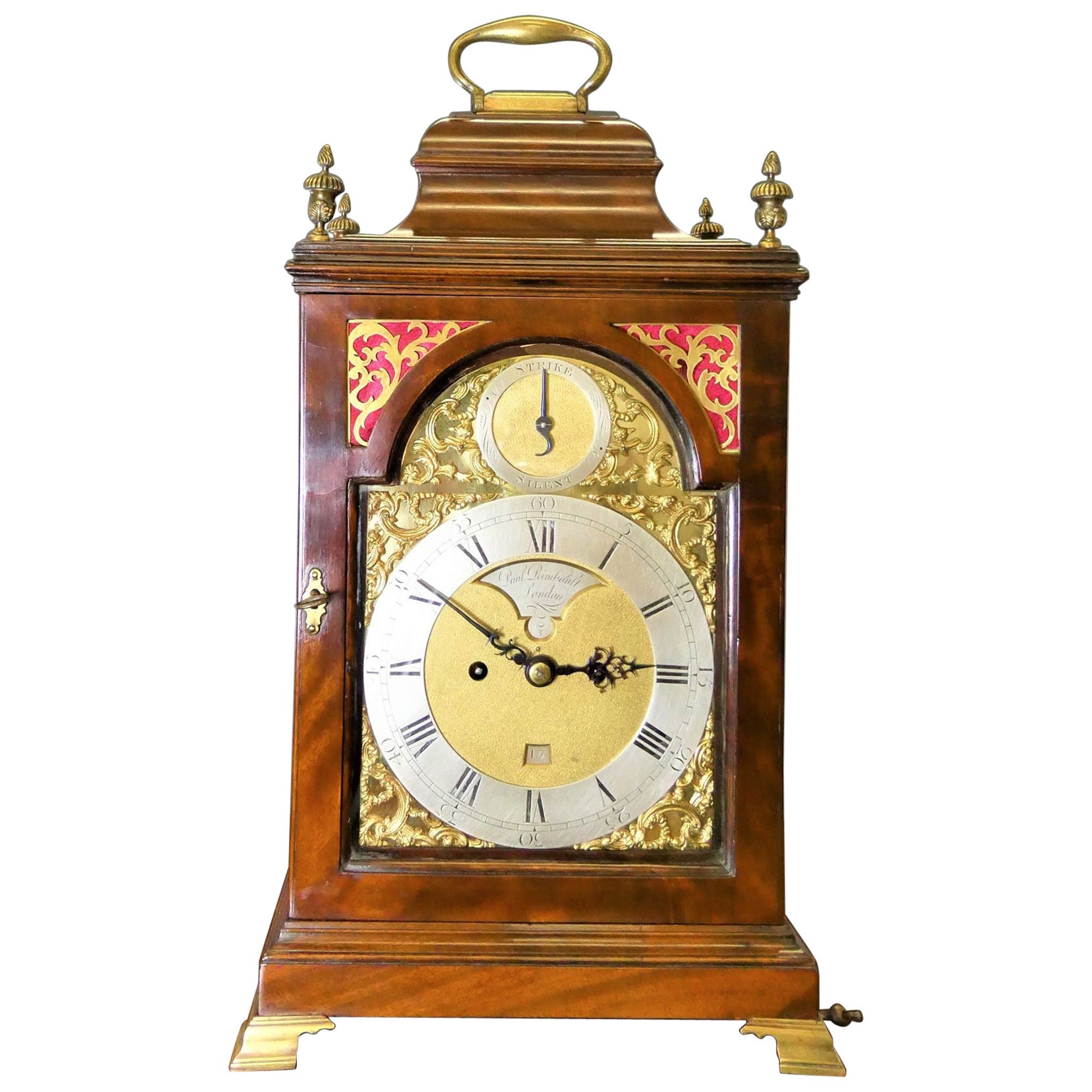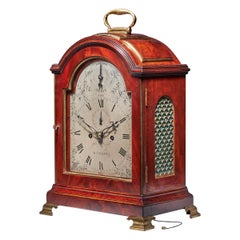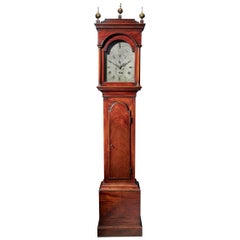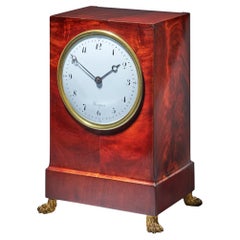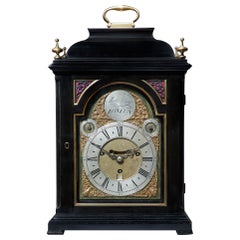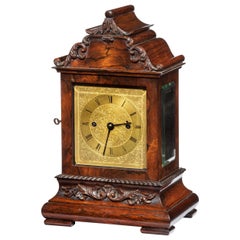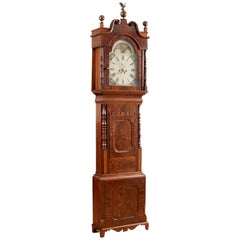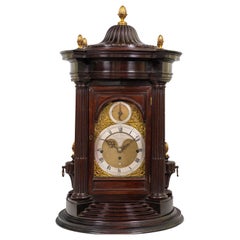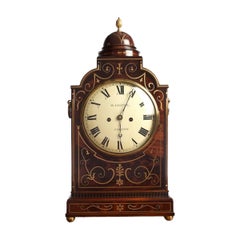Items Similar to Striking George IV Eight-Day Rosewood Pagoda Library Clock by French, London
Want more images or videos?
Request additional images or videos from the seller
1 of 7
Striking George IV Eight-Day Rosewood Pagoda Library Clock by French, London
$14,459.18
£10,495
€12,256.12
CA$20,019.75
A$21,856.78
CHF 11,458.61
MX$265,458.97
NOK 143,099.43
SEK 135,124.02
DKK 91,478.92
About the Item
This lovely small library clock has a spring-driven eight-day twin chain-fusee movement with going and striking trains. The going train has anchor escapement with a short pendulum and stirrup regulation to facilitate adjusting the timing, which is accessible from the back. The rack striking indicates the hours of a gently sounding bell, which can be repeated at all times by pulling a cord to the side of the case.
The elegant chased and engraved arched gilt brass dial has a Roman chapter ring with five-minute and minute divisions. The maker has signed the dial above the middle: FRENCH ROYAL EXCHANGE LONDON. The time is indicated by a fine pair of Breguet hands.
Signed on the dial: FRENCH ROYAL EXCHANGE LONDON
Circa 1820.
The finely carved pagoda top rosewood case has facetted glass to the sides so that the finely made movement is almost entirely visible. It has lovely mouldings all around, buttresses on the front corners and rests on four gilt brass bun feet.
Height: 25 cm
Literature:
Jonathan Betts, Marine Chronometers at Greenwich, Oxford, 2017, pp 317-18
Brian Loomes, Watchmakers and Clockmakers of the World, London, 2006, p. 282.
Tony Mercer, Chronometer Makers of the World, pp. 143-44.
The maker
Santiago James Moore French is recorded as becoming a member of the Clockmakers’ Company in 1810. He was active as a clock, watch and chronometer maker at 15 Sweetings Alley, Royal Exchange London. He was awarded prizes for his chronometers from the Admiralty in 1825. In 1839 he moved to 80 Cornhill where he died in 1842.
- Creator:Santiago James Moore French (Clockmaker)
- Dimensions:Height: 9.85 in (25 cm)Width: 6.3 in (16 cm)Depth: 5.12 in (13 cm)
- Style:George IV (Of the Period)
- Materials and Techniques:
- Period:
- Date of Manufacture:1830-1840
- Condition:Wear consistent with age and use.
- Seller Location:Oxfordshire, GB
- Reference Number:1stDibs: LU4936223539512
About the Seller
5.0
Recognized Seller
These prestigious sellers are industry leaders and represent the highest echelon for item quality and design.
1stDibs seller since 2019
24 sales on 1stDibs
Typical response time: A week
Associations
LAPADA - The Association of Arts & Antiques Dealers
- ShippingRetrieving quote...Shipping from: Faringdon , United Kingdom
- Return Policy
Authenticity Guarantee
In the unlikely event there’s an issue with an item’s authenticity, contact us within 1 year for a full refund. DetailsMoney-Back Guarantee
If your item is not as described, is damaged in transit, or does not arrive, contact us within 7 days for a full refund. Details24-Hour Cancellation
You have a 24-hour grace period in which to reconsider your purchase, with no questions asked.Vetted Professional Sellers
Our world-class sellers must adhere to strict standards for service and quality, maintaining the integrity of our listings.Price-Match Guarantee
If you find that a seller listed the same item for a lower price elsewhere, we’ll match it.Trusted Global Delivery
Our best-in-class carrier network provides specialized shipping options worldwide, including custom delivery.More From This Seller
View All18th Century George III Figured Mahogany Three Pad Stricking Bracket Clock
Located in Oxfordshire, United Kingdom
18th century George III figured mahogany three pad bracket clock by John Wright Dorking, Circa 1780. England
A most attractive English bracket clock, made around 1780, signed on ...
Category
Antique 18th Century English George III Table Clocks and Desk Clocks
Materials
Brass
Fine George III 18th Century Period Mahogany Longcase Clock by Tomas Fowle
Located in Oxfordshire, United Kingdom
A fine George III period mahogany longcase clock of excellent colour, patination and proportions, circa 1780-1790
Surmounted with three ball and spike brass finials, the inverted ...
Category
Antique Late 18th Century English Chippendale Grandfather Clocks and Lon...
Materials
Mahogany
19th-Century Flame Mahogany Mantel Clock by Breguet Raised by Lion Paw Feet
By Breguet a Paris
Located in Oxfordshire, United Kingdom
An extremely rare mantel clock with a figured mahogany-veneered case by A-L Breguet
Abraham-Louis Breguet (1747-1823), who was of Swiss origin, is undoubtedly the most celebrated clockmaker of the late eighteenth and early nineteenth centuries in France. He is responsible for the invention of the self-winding watch, the tourbillon and the sympathetic watch ( a watch that is placed in a cradle of a special clock. It is then linked by means of a pin fixed behind the clock dial. Built into the motion work which, when released by the clock, automatically sets the hands to the clock's time as well as correcting the watch's regulator necessitated by any degree of inaccuracy registered at the moment of synchronisation) and many other horological improvements and developments. Around the year 1807 Breguet brought in his son, Antoine-Louis (born 1776), as a business partner, and from this point, the firm became known as Breguet et Fils. Breguet had previously sent his son to London to study with the great English chronometer maker John Arnold...
Category
Antique Late 18th Century French Empire Mantel Clocks
Materials
Brass
Rare 18th Century George II Musical Table Clock by Matthew King, circa 1735
Located in Oxfordshire, United Kingdom
A rare George II musical table clock by Matthew King, circa 1735.
This unusual eight-day spring-driven table clock was made by Matthew King, wh...
Category
Antique 18th Century English George II Table Clocks and Desk Clocks
Materials
Silver, Brass
19th Century French Flame Mahogany Napoleon Empire Period Mantel Clock
By Breguet a Paris
Located in Oxfordshire, United Kingdom
A superb 19th century French Flame Mahogany Napoleon Empire Period Egyptian style Mantel Clock
This clock was produced in the Fr...
Category
Antique 19th Century French Empire Mantel Clocks
Materials
Brass
Fine English Drop Dial Wall Clock, Circa 1840
Located in Oxfordshire, United Kingdom
A lovely and attractive English trunk dial clock made c. 1840.
The mahogany veneered case is of an original design with slightly shaped sides to the trunk and a Sheraton-like she...
Category
Antique 19th Century English George IV Wall Clocks
Materials
Mahogany
You May Also Like
Late William IV Rosewood Bracket Clock by French, Royal Exchange, London
Located in Lymington, Hampshire
The case carved in high relief with scrolls and an acanthus leaf finial, the gilt face finely chased with further scrolls and signed on the dial, with a discreet/silent lever above t...
Category
Antique 1830s English Mantel Clocks
Materials
Rosewood
English Tall Case Clock by George Slater in Mahogany, circa 1830
Located in Miami, FL
An English tall case clock by George Slater in mahogany, circa 1830.
A fine tall-case clock, with the signature on the painted dial of "George...
Category
Antique 19th Century English Regency Clocks
Materials
Mahogany
18th Century Antique Mahogany Neoclassical Musical Clock by Ralph Gout of London
Located in Devon, GB
An impressive and unique 18th centur,y, GeorgeIII period antique circular mahogany musical table clock, in a case of neoclassical design by Ralph ...
Category
Antique Late 18th Century English Neoclassical Table Clocks and Desk Clocks
Materials
Brass
George III Mahogany English Fusee Bracket Clock by William Chater, London
Located in Norwich, GB
George III Bracket Clock.
Stunning mahogany case with Cupola top surmounted by a ‘pineapple’ finial, profusely inlaid with brass, fishscal...
Category
Antique 1810s English George III Table Clocks and Desk Clocks
Materials
Mahogany
Regency Mahogany Bracket Clock by George Grove, London
Located in Norwich, GB
Small regency bracket clock.
Mahogany chamfered top case surmounted by a brass pineapple finial with brass inlay, standing on a raised plint...
Category
Antique 1820s English Regency Mantel Clocks
Materials
Mahogany
George III Mahogany Bell Top Bracket Clock by Paul Rimbault, London
By Paul Rimbault
Located in Norwich, GB
George III bracket clock by Paul Rimbault, London
Finely figured mahogany bell top case with four finials surmounted by a brass hinged car...
Category
Antique 1770s English Table Clocks and Desk Clocks
Materials
Mahogany
More Ways To Browse
French Library
Small Clock
Striking Clock
Antique Stirrups
Eight Day Clocks Antique
French Gilt Brass Mantel Clock
Chronometer Watch
Hes Clock
Antique Chronometer
French Pagoda
Antique Alley
Chronometers
Antique Watch Makers
London Brass Clocks
French Antique Furniture London
19th Century Rosewood Clocks
Library Clock
Antique Library Clock
